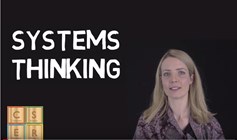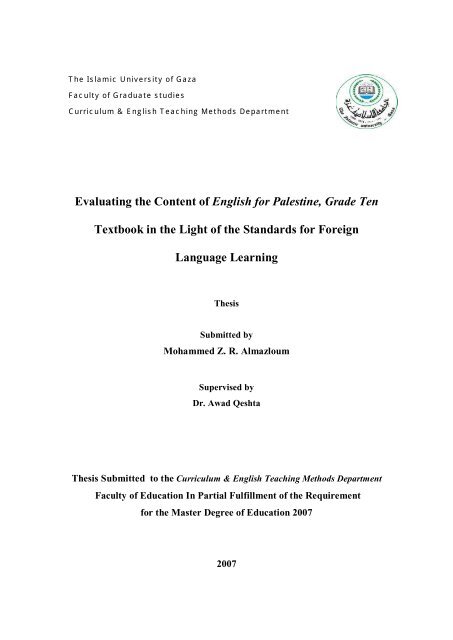One of the guiding principals of the Australian Curriculum Science syllabus is an emphasis on inquiry-based teaching and learning and the process of science inquiry (Australian Curriculum, 2014). Engaging with inquiry based learning, shifts the pedagogical approach to science away from the transmission of knowledge model to a model of student. The Australian Curriculum: English aims to ensure that students: learn to listen to, read, view, speak, write, create and reflect on increasingly complex and sophisticated spoken, written and multimodal texts across a growing range of contexts with accuracy, fluency and purpose. Read More Key ideas Texts Texts provide the means for. In Mathematics, the key ideas are the proficiency strands of understanding, fluency, problem-solving and reasoning. The proficiency strands describe the actions in which students can engage when learning and using the content.
Introduction In the Australian Curriculum, The Arts is a learning area that draws together related but distinct art forms. While these art forms have close relationships and are often used in interrelated ways, each involves different approaches to arts practices and critical and creative thinking that reflect distinct bodies of knowledge, understanding and skills.
Dear Ms Doe,
Thank you for your letter outlining your reservations regarding our Education for Sustainability (EfS) unit. I appreciate the interest you show in your child’s education and would like to take this opportunity to address your concerns by providing you with information regarding intended learning outcomes and educational aims associated with this unit. I would also like to reassure you that this unit arose not from my own views but rather, from learning objectives embedded within the national curriculum and the desire of the students themselves as they seek to better understand the cause and effect of deforestation in neighboring countries.
Firstly, this unit was guided and informed by cross-curriculum priorities specified in the Australian National Curriculum. These priorities, two of which include Asia and Australia’s engagement with Asia and Sustainability, are strongly future-focused and encompass all learning areas and disciplines within the national curriculum (ACARA, 2014a). Sustainability education is also particularly suited to themes investigated in Humanities and Social Sciences (Reynolds, 2014), being identified as one of seven main geographical concepts, and aligning closely with history and civics and citizenship educational aims (ACARA, 2014b). It is within this context that our year six unit of work on the South-east Asian rainforests was first conceived.
As a teacher, a main priority is to ensure that my students have the skills and understandings required to become active and informed global citizens. I feel strongly about involving students in their own education and my teaching and learning practices encourage students to think, feel, critique, investigate and reflect. Students are encouraged to explore matters they feel have significance or relevance to themselves and their futures and, as such, a detailed discussion was held with students volunteering topics of interest. A consensus was reached and our topic on Southeast Asian rainforests selected. Holden and Hicks (2007) indicate that many students are concerned about global issues, such as poverty and environment, and the ways in which these issues may affect their futures and want to learn more about the cause and effect of such matters.
Following principles outlined by the Australian Research Institute for Environment and Sustainability (ARIES), students are examining the connections between social, economic and cultural environments. They are investigating the management of these forests, loss of habitat and impacts on native animals (particularly Oran-tangs). They are researching the intended use and final destination of products and their consumers and this has led to their awareness of the many brands and products we use here in Australia that contribute to deforestation. Learning activities have been designed to provide information on ‘how’ to learn rather than ‘what to learn’ and I have provided a collaborative classroom environment in which to investigate these maters safely. Evans (2006) suggests this type of classroom environment can nurture student involvement and can facilitate a deeper understanding of underpinning knowledge and skills associated with Humanities studies.
So far, I have been amazed at the depth of feeling and maturity displayed by my students during this investigation. The empathy your child has shown towards both animals and poverty affected workers has allowed her to understand and appreciate the different perspectives involved in this issue and her determination in finding possible solutions has contributed greatly towards her decision to raise public awareness of this topic. While I may have provided the materials students need to critically examine and research this issue, the learning they have undertaken so far has empowered them and given them ownership of this issue.
I would love for you to arrange a time to visit our classroom and view our displays and presentations. Hopefully, I have addressed any concerns you may have relating to personal bias or beliefs I hold about this subject. Please, do not hesitate to contact me if you have any further enquiries.

Kind Regards
Corinna Leaman – Grade 6 Teacher
References
Australian Curriculum, Assessment and Reporting Authority [ACARA] (2014a). The Australian curriculum (v. 7.2): Cross-curriculum priorities. Retrieved from
Australian Curriculum, Assessment and Reporting Authority [ACARA] (2014b). The Australian curriculum (v. 7.2). Retrieved from:
Evans, M. (2006). Education for citizenship: What teachers say and what teachers do. Canadian Journal of Education, 29, 410-435. Retrieved from:
Holden, C., & Hicks, D. (2007). Making global connections: The knowledge, understanding and motivation of trainee teachers. Teaching and Teacher Education, 23, 13-23. doi: 10.1016/j.tate.2006.04.031
Reynolds, R. (2012). Teaching history, geography and sose in the primary school (2nd ed.). South Melbourne, VIC: Oxford University Press.
Image retrieved from http://celfeducation.org/WhatWeDo.html
Dear Parents,
Thank you for raising your concerns in regards to the sustainability learning your children are participating in. Your feedback is appreciated and beneficial to the development of my teaching practice.

Our Year 5 Geography unit this term focusing on urban development is designed to encourage students to explore the extent of change in local environments over time (ACHGK027) (Australian Curriculum, Assessment & Reporting Authority [ACARA], 2014a). This is aligned with the geographical knowledge and understanding section of the Australian Curriculum. Education for Sustainability [EfS] is an integral aspect of your child’s education as it assists students developing capabilities that contribute to a more sustainable future in relation to environmental integrity, economic feasibility and a just society for present and future generations (Cutter-Mackenzie & Hoepper, 2014). It offer teachers with the opportunity to incorporate environmental education and recognises that fundamental human rights and social justice are just as essential to a sustainable development as environmental sustainability (Reynolds, 2012).
The purpose of this unit is to provide opportunities for students to become active and engaged lifelong learners while equipping them with the skills and motivation to plan and manage change towards a sustainable environment (Department of the Environment, Water, Heritage and the Arts, 2009). This is associated with the Civics and Citizenship domain of the Australian Curriculum where students are guided in developing questions and gathering information to investigate the society in which they live (ACHCS028) (ACARA, 2014b). Students will critically think by identifying and clarifying ideas, organising and processing information and considering different perspectives and alternatives in relation to urban development. This unit addresses the concept of cities as urban ecosystems that include both nature and humans in a largely human-built environment. Students will explore how the exploitation of forests, irrigation waters, and other resources led to catastrophe for some cities; they will also look at some of the positive environmental features of urban development. Students will put their knowledge into practice by designing their dream house; the house must contain sustainable features and needs to be as environmental friendly as possible. Students will be asked to discuss what this means to them.
Supporting students through the learning of controversial issues encourages them to explore and evaluate contested issues, gather evidence, make judgements and create solutions guiding them in becoming informed and effective citizens and active participants in change actions (Cutter-Mackenzie & Hoepper, 2014). Sustainability has a key position in the Australian Curriculum and each subject area is expected to incorporate it.
My aim is to support students in becoming active and informed citizens while providing them with skills to make decisions based on ethical reasoning. I am in no way trying to influence students and I endeavour to keep my personal views out of the classroom. When exploring controversial issues a risk free and non-judgmental environment for all students is maintained. Students are supported in discussing their own experiences and their opinions are respected and valued. The Melbourne Declaration on Education Goals for Young People (2008) highlights this and suggests the role of the teacher is to ensure all students become confident and independent learners.
If you continue to have concerns or have further questions please do not hesitate to contact me. I hope this letter has assisted you in your concerns.
Regards,
Nicole Engberg
Year 5 Teacher
Reference
Australian Curriculum, Assessment & Reporting Authority [ACARA]. (2014a). Foundation to year 10 curriculum: Geography. Retrieved from http://www.australiancurriculum.edu.au/humanities-and-social-sciences/geography/curriculum/f-10?layout=1#level5
Australian Curriculum, Assessment & Reporting Authority [ACARA]. (2014b). Foundation to year 10 curriculum: Civics and citizenship. Retrieved from http://www.australiancurriculum.edu.au/humanities-and-social-sciences/civics-and-citizenship/curriculum/f-10?layout=1#level5
Cutter-Mackenzie, A. & Hoepper, B. (2014). Teaching for sustainability. In R. Gilbert & B. Hoepper (Eds.), Teaching humanities and social sciences: History, geography, economics and citizenship in the Australian curriculum (5th ed.). (pp. 390-418). South Melbourne, VIC: Cengage Learning.
Department of the Environment, Water, Heritage and the Arts. (2009). Living sustainably: The Australian government’s national action plan for education for sustainability. Retrieved from http://www.environment.gov.au/system/files/resources/13887ab8-7e03-4b3e-82bb-139b2205a0af/files/national-action-plan.pdf
Ministerial Council on Education, Employment, Training and Youth Affairs (MCEETYA). (2008). Melbourne Declaration on Educational Goals for Young Australians. Carlton South, VIC: Author.

Australian Curriculum V7.2 Updateeffective Curriculum Ideas 2020
Reynolds, R. (2012). Teaching history, geography & sose in the primary classroom. (2nd ed.). South Melbourne, Victoria: Oxford University Press.